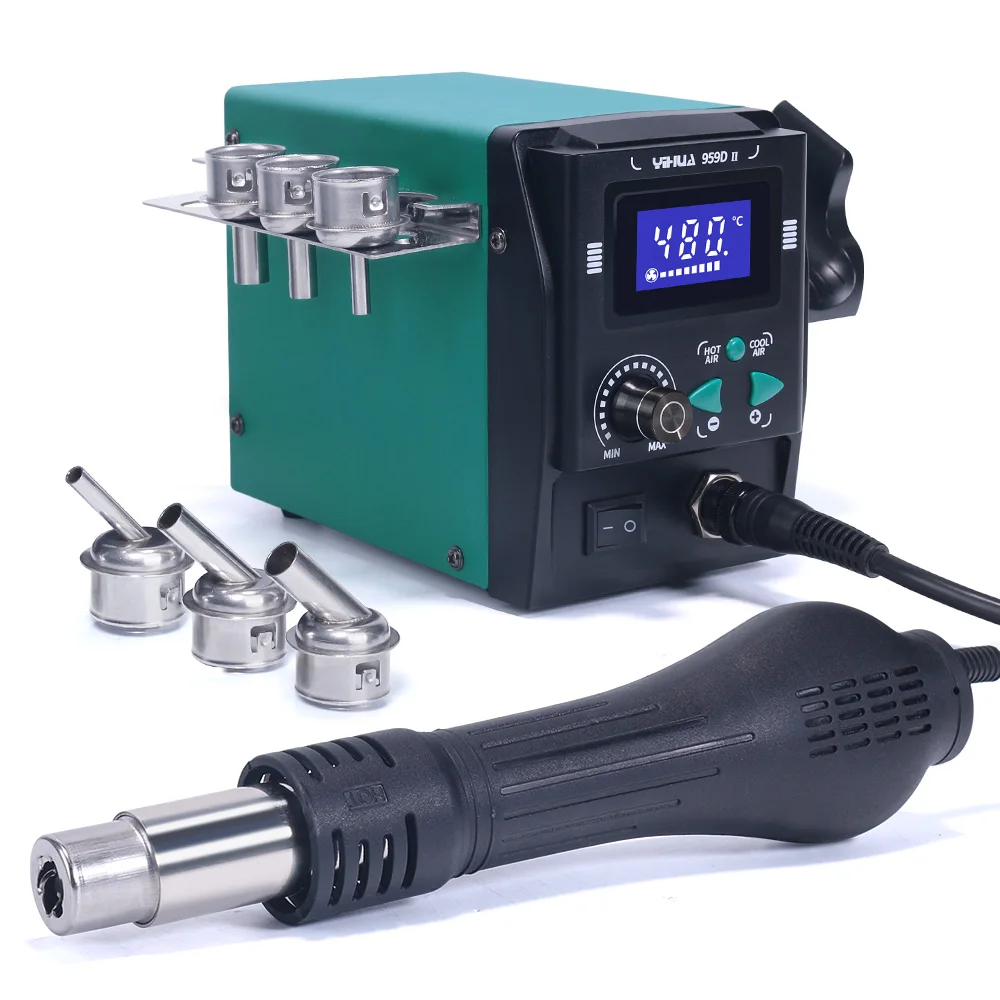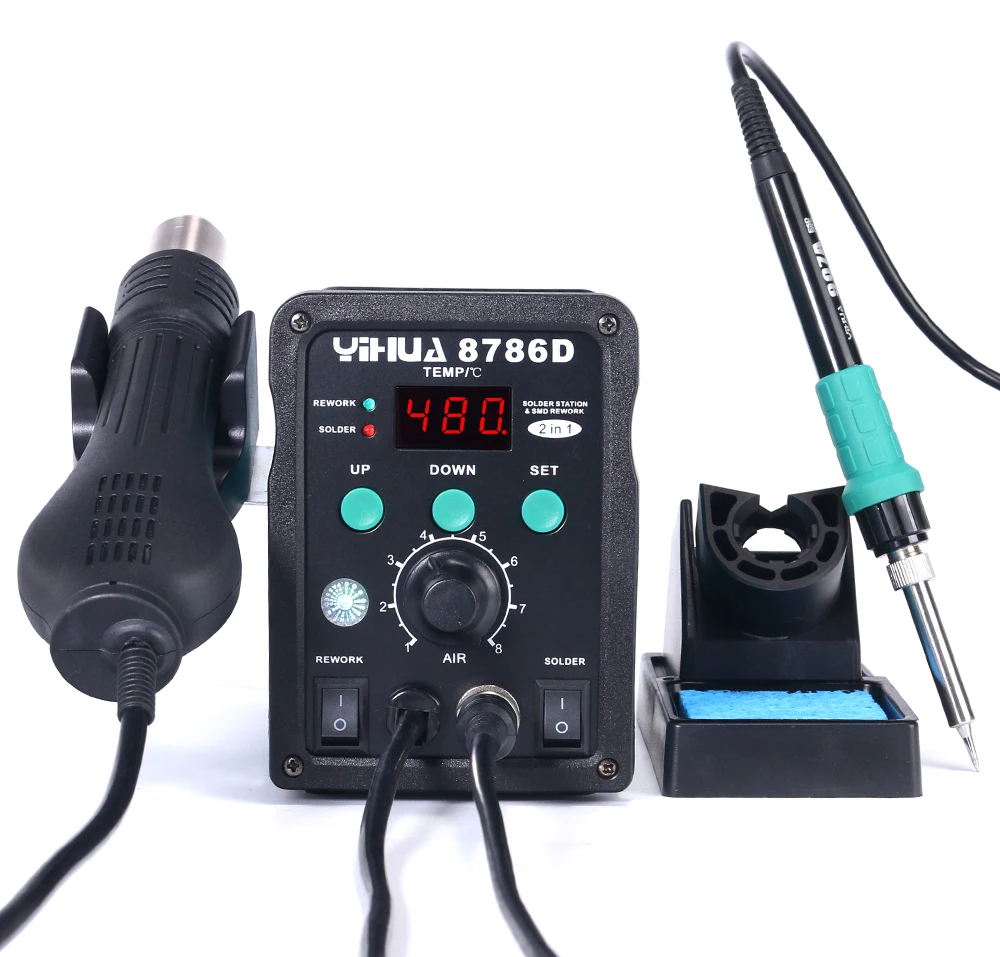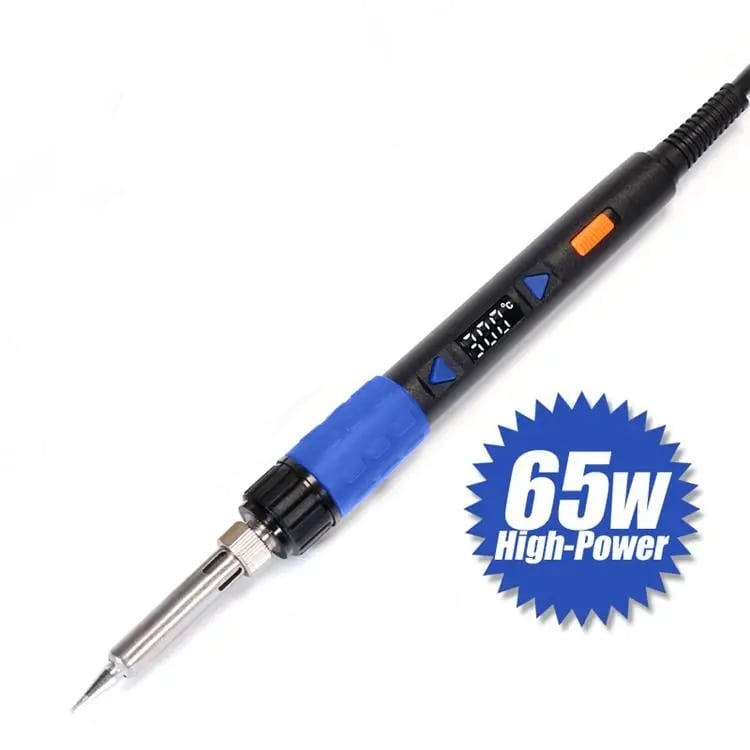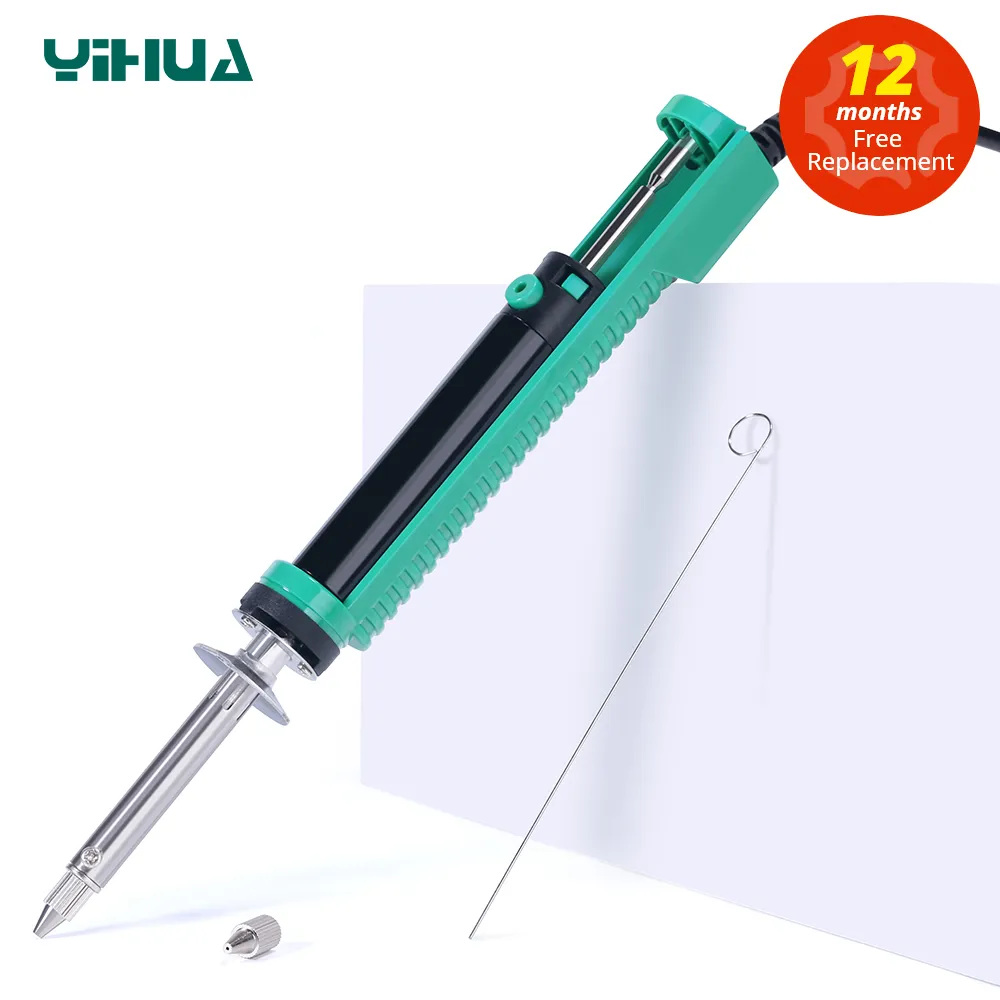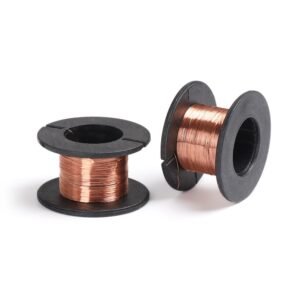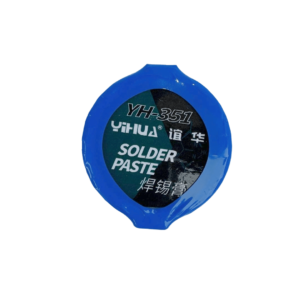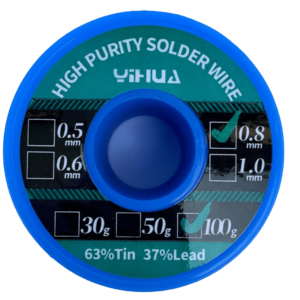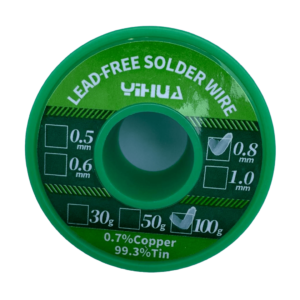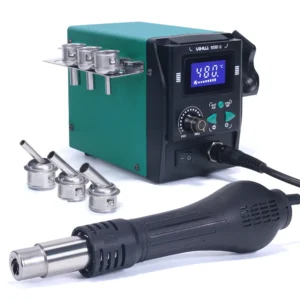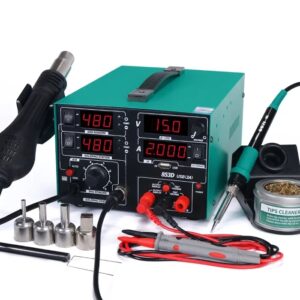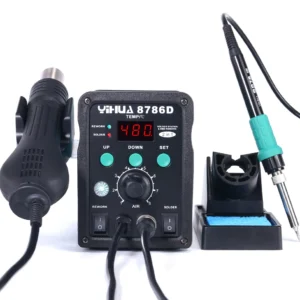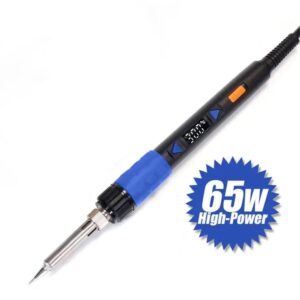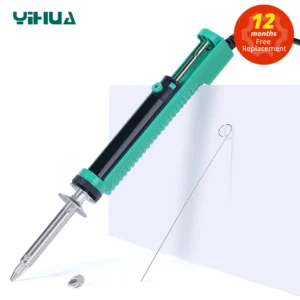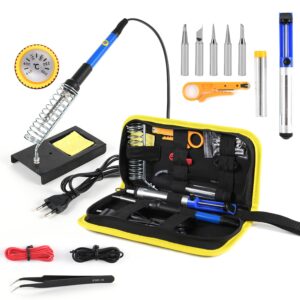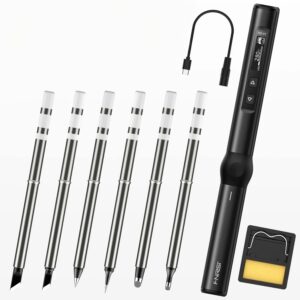Understanding the Composition of Soldering Paste
At the heart of countless electronic assemblies lies soldering paste – a substance that considerably influences the durability and functionality of soldered components. Delving into the essence of what constitutes soldering paste equips practitioners with the knowledge to make discerning choices, appropriate not just for seasoned professionals but also for those adopting soldering techniques for beginners.
Defining Solder Paste and Its Significance in Soldering
Solder paste is a veritable blend of countless tiny solder particles suspended in a specialised flux. This amalgamation is pivotal for the process known as reflow soldering, commonly employed in the assembly of printed circuit boards (PCBs). By understanding its role and utility, those engaging in soldering can ensure that connections are not merely precarious points of metallic contact, but robust, enduring bonds between components.
Flux Medium: The Key to Effective Soldering
The inherent capabilities of soldering paste are significantly enhanced by the flux medium – a substance designed to promote the flow of solder and guard against the pernicious effects of oxidation during soldering. The selection of appropriate soldering flux within the paste can define success or failure in creating top-quality soldered joints. Therefore, bright-eyed novices and seasoned craftspeople alike must comprehend flux mediums to apply potent soldering tips.
Characteristics and Performance of Different Solder Paste Formulations
Solder paste is classified by the minuscule solder spheres it comprises of, with formulations adhering to various industry-defined grades. These formulations respond uniquely to heat and must be administered with precision – a critical aspect for both seasoned veterans and those new to soldering techniques. Recognising the nuanced differences between solder spheres predominantly composed of tin, copper, or an assortment of other metals is foundational knowledge for all soldering aficionados.
| Formulation | Particle Size (µm) | Common Composition | Advantages |
|---|---|---|---|
| Type 3 | 25 – 45 | 99.7% Tin, 0.3% Copper | Widely used, environmentally friendly |
| Type 4 | 20 – 38 | Various Lead-Free Alloys | Suitable for fine pitch components |
| Type 5 | 10 – 25 | High Tin Composition | Excellent for miniature and dense PCBs |
Soldering is easier and better once you understand the different types of soldering flux:
- Rosin-based: Easy to clean with solvents, good all-around choice.
- Water-soluble: Easy cleanup with water, good for electronics with sensitive components.
- “No-clean”: No post-soldering cleaning needed, but may leave residue that can affect conductivity over time.
The considerations taken when selecting soldering flux can be the difference between a makeshift fix and a fixture that lasts generations.
Understanding the makeup of soldering paste is a skill of immeasurable worth, both for the novice just commencing their foray into the world of electronics and the expert looking to finesse their craft. By confidently navigating through the nuances of soldering paste formulations and appreciating the science behind the flux, you are poised to execute your soldering techniques with a markedly higher degree of finesse and success.
Using Soldering Paste with PCB Assembly
The confluence of a proficient soldering technique and the discerning use of a soldering iron can make or break the delicate process of PCB assembly. Central to this craft is the skilful application of soldering paste—a multifaceted substance that, when utilised effectively, informs the success of both large scale production and individual prototype projects.
Understanding how to maneuver soldering paste in preparation for the pick-and-place stage marks the difference between a thriving circuit board and a failed endeavour. It is this stage that sets the foundation for the imminent passage of the assembly through an infrared reflow machine, which transforms the meticulously applied paste into robust soldered joints.
Soldering paste application requires precision; a less-than-accurate process could lead to common pitfalls such as poor soldering joints or dreaded short circuit scenarios.
To prevent such defects, stencils are employed to ensure that soldering paste adheres strictly to the designated areas upon a PCB, a tactic that underscores the finesse inherent to soldering skills. The moment the soldering iron meets the board, it’s the understanding of these nuances that facilitate a smooth transition from separate electronic components to a cohesive, functioning unit.
The following table illustrates the stark differences in outcomes when soldering paste is either correctly or incorrectly applied during PCB assembly, evidencing the critical nature of high-quality application practices:
| Application Technique | Outcome | Quality of Joint | Next Steps Required |
|---|---|---|---|
| Precise alignment with stencil | Strong, reliable soldered joints | High | Proceed with confidence |
| Application without stencil | Potential short circuits | Low | Re-assessment and reapplication |
| Excessive paste on PCB | Poor joints, solder bridging | Varies | Removal of excess and rework |
As intimidating as it may seem to an amateur—grappling with the myriad responsibilities of soldering techniques—rest assured the careful application of soldering paste bears the fruit of solidity and finesse in electronic creations. Whether you wield the soldering iron daily or occasionally, take pride in this craft, for it marries the science of materials with the artistry of making.
Types of Soldering Flux and Their Uses
When engaging in soldering activities, the selection of the appropriate soldering flux is fundamental to project success. The flux acts as a facilitator, enhancing the flow of the solder and protecting against oxidation. As enthusiasts delve into the realm of electronics and crafting, understanding the differences between various flux types is as essential as possessing robust soldering tools.
Rosin Based vs Water Soluble Flux Pastes
Rosin-based solder pastes are favoured for their natural origins, derived from the sap of pine trees, and their post-soldering cleanability using solvents. This type offers a traditional approach to soldering, aligning with various requirements of delicate soldering tasks.
In contrast, water-soluble flux pastes stand out for their modern composition, including organic materials and glycol bases, allowing for a diverse selection of cleaning options post-application. The practicality of these pastes blends well with dynamic soldering processes, crafting an easier workflow.
No Clean Solder Paste: Benefits and Limitations
Amidst the spectrum of soldering fluxes lies the innovative ‘no-clean’ solder paste. Characterised by minimal residue post-soldering, this paste negates the need for a post-soldering cleaning process entirely. However, it demands a pristine assembly environment, often necessitating inert conditions to mitigate the risk of contamination, which could otherwise impact the soldering outcome.
From the intricate components used in electronics to the soldering tools that facilitate the assembly of such devices, flux plays a pivotal role. By choosing the right type of flux for the right soldering scenario, crafters and technicians can significantly enhance the reliability and durability of their soldering projects.
Choosing the Right Soldering Tools for the Job
Selecting the perfect set of soldering tools is not only about acquiring equipment; it’s about arming yourself with instruments of precision that will shape your craftsmanship. A top-notch soldering iron, supplemented with the finest soldering tips and syringes, forms a triad that will indisputably influence the quality of your soldering projects.
Skilful application of soldering paste and the production of seamless soldered joints hinge on the capabilities of the soldering tools employed. Let’s delve into the essentials that make up the arsenal of any seasoned artisan or determined beginner in the soldering realm.
The Importance of a Quality Soldering Iron
The heart of any soldering setup is the soldering iron. It is indispensable in effecting the melting and flow of solder, thereby enabling the creation of solid connections between components. A quality soldering iron allows for consistent heat distribution, has a comfortable grip that facilitates precision, and, importantly, features interchangeable soldering tips for versatility across various tasks.
Selecting Soldering Tips and Syringes
When it comes to applying soldering paste, it’s often about intricate details. Precision is paramount, and that’s where specialised soldering tips come into play. Tips should be chosen based on the nature of the job – finer points for minute work, and broader tips for larger connections.
As for syringes, they are your allies in administering just the right amount of soldering paste. Attaching narrow tips to the syringes ensures controlled discharge, minimising waste and avoiding the excess that can compromise a joint. Beyond use, storage becomes crucial; keeping syringes in a glass jar along with a little mineral oil will stave off the drying out of solder paste, elongating the functional lifespan of these vital soldering tools.
| Soldering Tool | Function | Recommended Use | Storage Tips |
|---|---|---|---|
| Soldering Iron | Heats and melts solder | General soldering tasks | At room temperature in a dry place |
| Finer Soldering Tips | Precise solder application | Detailed electrical work | Clean after use and store away from moisture |
| Syringes with Narrow Tips | Controlled solder paste application | Complex or small-scale soldering | In a glass jar with mineral oil |
With sagacious selection and steadfast care for your soldering tools, you set the stage for excellence in every join, bond, and soldering venture you undertake. In the dynamic world of electronic repairs and creations, the right tools do not just make a project possible; they make it masterful.
Optimal Storage Conditions for Solder Paste
Ensuring the longevity and efficacy of solder paste hinges upon optimising storage conditions. To thwart the hazard of solder drying, one must commit to practices that maintain the moisture balance intrinsic to the paste’s composition. The adept storing of syringes factors commendably in this preventative approach, favouring an environment conducive to preserving the solder paste’s functional characteristics.
Preventing solder drying is not merely about securing the immediate usability of the paste but is rather an investment in the consistency of future soldering endeavours. The symbiosis between refrigerating solder paste at 40°F and confining it within air-tight containers emerges as a strategic bulwark against oxidation—a process that could otherwise severely compromise the paste’s integrity.
Refrigeration unequivocally retards the oxidation rate, elegantly slowing the flux’s degradation and protracting the solder paste’s potency. Nonetheless, caution is enjoined, as descending beyond the threshold of freezing may invite the undesirable precipitation of activators within the paste. Should one descend into such predicaments, reconstituting dried syringes becomes the order of the day, necessitating the measured introduction of a few drops of mineral oil to resuscitate the solder paste’s pliability.
| Storage Practice | Objective | Benefits | Considerations |
|---|---|---|---|
| Air-Tight Conditions | Avoid oxidation | Maintains solder quality | Ensure seals are intact |
| Refrigeration at 40°F | Slow oxidation and flux degradation | Extends shelf-life | Avoid freezing temperatures |
| Reviving Dried Paste | Restore functional properties | Salvage valuable resources | Use mineral oil sparingly |
When discussing storing syringes, the methodical placement in glass jars complemented with a conservative quantity of mineral oil presents itself as an exemplary practice, reinforcing the readiness of the solder paste for imminent usage. Upon confronting the headache of reversion, where the paste has surrendered to dryness, one mustn’t flounder; instead, reconstituting dried syringes via strategic additions of mineral oil can redeem the situation, manifesting as a triumph of resourcefulness.
Consequently, the acuity in managing solder paste not only embodies technical know-how but also enshrines the virtues of foresight and economy. The assiduous adherence to these prescribed storage techniques guarantees the preservation of solder paste, concomitantly insulating one’s soldering practice from the vagaries of material degradation. Emboldened with this knowledge, one is well-equipped to navigate the intricacies of soldering with a steadfast aplomb.
Applying Solder Paste on Surface Mount Boards
Ensuring accuracy and precision during the assembly of PCBs is a fundamental aspect of a soldering tutorial aimed at those practising soldering techniques for beginners. This section emphasises the significance of proper application of soldering paste to yield reliable and effective joints on surface mount boards.
Using Stencils for Precise Application
For beginners, the convergence of an instructional soldering tutorial and the practical application of soldering paste using stencils is an invaluable strategy to ensure accuracy. Stencils are vital tools in delineating the exact locations where solder paste must be applied, thus forming the first critical step towards a successful, precise soldering operation.
A well-designed stencil allows solder paste to be deposited in the correct pattern and quantity on the PCB, preventing common errors such as excessive solder that could lead to short-circuits and compromised structural integrity of solder joints.
Ensuring Consistency in Solder Paste Application
Once the application phase is set up with a stencil, maintaining consistent results is paramount. This involves a methodical approach to distribute the solder paste evenly across all intended points on the PCB. It is this uniformity that fortifies the stability of subsequent joints formed during the heating phase, which is a fundamental element highlighted in many soldering techniques for beginners.
By concentrating on steadfast application methods, beginners can gain the confidence and competence needed to achieve consistency, minimise the risk of defects, and ensure the strength and durability of the resulting electronic assemblies.
By marrying these practices with insights from esteemed soldering tutorials, budding soldering practitioners will be well-equipped to handle the intricacies of PCB assembly with expertise, transforming them from novices to adept assemblers over time.
Advanced Soldering Techniques for Beginners
Embarking on the journey of mastering soldering can often feel daunting to the beginner; however, the reward of progressing from simple to advanced techniques cannot be overstated. It’s essential to appreciate that the core of learning sophisticated soldering techniques for beginners lies in the understanding and implementation of the fundamentals with precision and skill.
Improving Precision with Solder Paste Application
The application of solder paste is a delicate art that requires a steady hand and a mindful approach. Beginners are encouraged to start with basic projects, progressively enhancing their dexterity by practising consistent paste application. An understanding of solder pastes and how they react to heat will significantly increase a novice’s ability to create smooth and reliable solder joints.
One of the soldering tips that cannot be overstated is the usage of a high-quality soldering iron. The iron must be heated to just the right temperature to ensure that the paste melts evenly, without causing damage to the components or board. Seasoned professionals know that too much heat can lead to the dreaded ‘tombstoning’ effect, where the components lift from the surface of the circuit board during reflow.
Techniques to Prevent Overheating and Cold Joints
Overheating is a common pitfall for rookies, and understanding how to avoid it is a mark of progress in one’s soldering techniques for beginners. Use the soldering iron cautiously and make sure not to linger too long on any one solder joint. It is better to solder at lower temperatures for a longer period than to use too high of a temperature and risk damaging the delicate electronics.
Conversely, cold joints can occur if the solder has not been heated enough to flow properly. It’s imperative to ensure that the heat is evenly distributed and that the soldering iron makes proper contact with both the solder and the components for an adequate duration.
By understanding and preventing both overheating and cold joints, beginners can avoid common mistakes and create soldering projects that are not only functional but also aesthetically pleasing.
To avoid common beginner errors, it’s recommended to employ a series of checks and balances. One must regularly inspect the joints for any signs of trouble and rework them if necessary. Over time, practice will make perfect, and the once-intimidating process of applying solder paste with a soldering iron will become second nature.
By following these guidelines and continually refining their soldering practice, any beginner can learn advanced techniques to craft expert-quality soldered joints. Remember, a strong foundation in soldering basics paves the way to mastering advanced techniques with confidence and professionalism.
Soldering Paste Grades and What They Mean
For enthusiasts and professionals alike, understanding the grades of soldering paste is a quintessential part of the soldering process. Each grade, denoted by the size of the solder particles, impacts the behaviour of the paste when heat is applied – a factor not to be underestimated in precision electronics work. Here, we delve into the subtleties of these grades and their practical implications, enriching your repertoire of soldering tips and tricks whilst advancing your proficiency in using soldering paste.
It’s the granular details, quite literally, that can make or break a soldering task. Whether applying solder paste for intricate CPU work or larger-scale electrical joinery, selecting the appropriate paste grade is crucial. For example, a Type 7 solder paste, with particles ranging from a mere 2 to 11 micrometres, is praised for its suitability for detailed tasks requiring a high degree of precision. Conversely, Type 1, featuring bolder particles of 75 to 150 micrometres, is favoured for tasks where broad application is advantageous.
| Grade | Particle Size Range (µm) | Optimal Use |
|---|---|---|
| Type 1 | 75 – 150 | General applications requiring wider spread |
| Type 4 | 20 – 38 | Fine pitch components, precision assembly |
| Type 7 | 2 – 11 | Ultra-fine details, micro-electronic parts |
In this tableau of soldering media, there’s a grade for every purpose. But knowing the numeric value isn’t enough; the art lies in interpreting these numbers to make selections that match the requirements of the task at hand, transforming the mundane act of splicing wires into an act of engineering elegance. Whether you’re in the throes of learning the basics or refining advanced soldering techniques, the conscious choice of solder paste grade can significantly bolster the standard of your soldering executions.
Setting the foundations solid with the right soldering paste for the right job means further soldering tips and tricks can be applied with increased efficacy. From ensuring even heating to avoiding the pitfalls of solder balling, each grade of solder paste has its part to play. Embrace the knowledge of these grades as you would your trusty soldering iron, and observe as your skillset and the durability of your soldering projects thrive in tandem.
The Role of Temperature in Soldering With Paste
As you venture into using soldering paste, recognising the critical role that temperature plays is paramount for success. Temperature can either be an ally or a foe in the delicate balance of soldering processes. The expertise that comes with experience and the insights gained from a soldering tutorial are vital in harnessing temperature’s influence to achieve impeccable solder joints.
Avoiding Heat-Induced Flux Separation
When high temperatures intrude upon the soldering process, they can instigate the separation of the flux from the solder paste, altering its rheological properties. This separation can tragically culminate in the emergence of printing defects, compromising the integrity of the soldering project. It is essential, therefore, to regulate the heat applied during soldering meticulously to avert such detrimental outcomes.
Preventing Freezing and Moisture-Related Issues
Frosty conditions can be equally calamitous, instigating the activators within the solder paste to separate out and diminish the paste’s wetting capabilities. In addition, solder paste is susceptible to moisture which can spark a host of defects, including slump and solder balling, while also unfavourably influencing tack time and wetting properties. The conscientious control of both temperature and humidity during soldering is not just recommended; it is crucial for the attainment of a successful and reliable soldering result.
Bringing these considerations to the fore when using soldering paste can significantly upsurge the efficacy of your soldering pursuits. Heat, if unrestrained, can be a subtly destructive force, dissecting the cohesive unity of your paste. Likewise, a frigid environment can dislodge the essential activators responsible for the seamless adherence of your components. Your vigilance in these aspects will undeniably elevate the quality of your soldering undertakings.
Methods to Extend the Shelf Life of Soldering Paste
Extending the shelf life of soldering paste is crucial in preventing solder drying and ensuring that your projects maintain a high standard. Whether you’re an electronics hobbyist or a professional, these methods will help you preserve your paste’s quality and efficacy.
Firstly, proper refrigeration is imperative. By keeping the paste cool, you prevent the flux from degrading, thus maintaining the paste’s performance. However, it is essential to avoid freezing the paste, as this could cause irreparable damage to its consistency and usability.
Moreover, safeguarding the paste from exposure to moisture and air is critical in preventing solder drying. Employing airtight containers to store your paste is a best practice, successfully deterring oxidation and moisture ingress.
An efficient inventory management system, such as the “first in, first out” method, ensures that older stocks are used before they surpass their shelf life. Consistent use of the oldest available materials can significantly reduce wastage due to expiry.
Another key practice is the meticulous storing of syringes. Adopting the right storage measures for syringes could mean the difference between a smooth application and a frustrating one. Here are some methods presented in tabular form.
| Storage Method | Purpose | Benefit |
|---|---|---|
| Airtight conditions | Prevent air contact | Minimises oxidation |
| Refrigeration | Prolong freshness | Keeps the paste viable for longer durations |
| Resuscitation with Mineral Oil | Restore syringe paste | Reduces need for replacements |
Finally, following these measures, from refrigeration techniques to storing of syringes, not only inhibits the drying of solder paste but truly extends its shelf life, enabling continuous quality in your soldering tasks.
Tips and Tricks to Enhance Solder Paste Usage
Unlocking the full potential of solder paste in your soldering projects is predicated on mastering a few pivotal soldering tips and tricks. By academically adhering to optimal methods for mixing and warming solder paste, and effectively managing its application, you can significantly uplift the standard and efficiency of your soldering techniques. Let’s delve into the nuances that can empower you to finesse your approach and minimise wastage while ensuring optimal application.
Mixing and Warming Solder Paste for Optimal Results
Embracing the complexity of solder paste begins with understanding its temperamental nature. Prior to its application, the paste should be coaxed back to room temperature; a practice that circumvents the pitfalls of moisture condensation and preserves the paste’s uniformity. Thorough mixing and gradual warming bolster its fluidity and reactivity, pivotal characteristics that influence the efficacy of the soldering techniques implemented thereafter.
Managing Solder Paste Wastage During Applications
Efficiency in soldering extends beyond skillful application; it’s also entwined with the judicious use of materials. Regular addition of small quantities of solder paste during the process helps maintain a fresh supply on the stencil, which is crucial in actualising a seamless soldering operation. Implementing such measured control fortifies the assurance of using only what’s necessitated, thereby curtailing excess and underpinning the precision of results. The resultant conservation of solder paste not only optimises resources but also epitomises the application of soldering tips and tricks designed to refine the workmanship in electronic assemblies.


